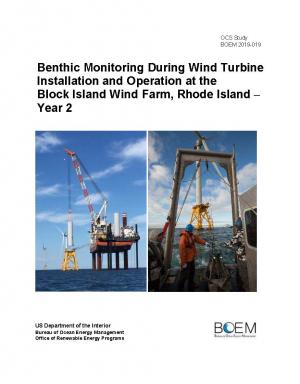Key Researchers: Monique LaFrance Bartley, Paul English, John W. King, Anwar A. Khan
The Block Island Wind Farm is a five-turbine, 30-megawatt facility located 4.5 kilometers from Block Island, Rhode Island, in the Atlantic Ocean. Turbines are fixed to the seafloor by steel jacket (lattice) structure foundation types. Three turbine foundation locations were selected for sampling based on their different seafloor types present in the study area. Triplicate, clustered seabed samples were collected using a quantitative grab at distances of between 30 m and 90 m from the center point of each foundation, and at control stations, to determine the presence of any gradient effects and modified physical, chemical, and biological conditions over and above natural variations. Video and photographic stills provided complementary information on seabed substrate types, bedforms and larger epibenthos.
Findings
No substantial differences within the range of 30 to 90 meters from the center of the foundations two years after installation.
While the area of seabed underneath the jacket structure at Turbine 1 exhibited significantly higher levels of fine-grained sediment and organic material, marine species sampled were comparable with surrounding benthic habitats.


